Q&A: Expert Discusses the Critical Role of Clinical Pharmacists in Diabetes Management
Clinical pharmacists transform diabetes care by leveraging manufacturer-sponsored patient assistance programs to dramatically improve medication access.
Nathan Ramsbacher, PharmD, clinical assistant professor of pharmacotherapy at Washington State University, discusses the critical role of clinical pharmacists in improving medication access and health care outcomes, particularly for patients with diabetes. To address challenges around cost, the pharmacy team implemented a comprehensive medication access strategy centered on manufacturer-sponsored patient assistance programs. The clinic's approach was remarkably successful, signing up 75 patients and saving an average of $11,000 per person, totaling approximately $867,000 in medication costs over a year.
Drug Topics®: The PMDP service also assisted with medication access via patient assistance programs, resulting in significant savings. Can you discuss your experience and approach to helping patients overcome financial barriers to medication access?
Nathan Ramsbacher, PharmD: I think this was a major part of our program too, and one of the biggest barriers for improving some of these clinical quality outcomes and health care in general is medication access. A great deal of the patients that I saw initially that had poor glycemic control was not only because of maybe lack of education, but it was really lack of access to these medications that have been so crucial to guideline changes in the last 10 years, specifically with the standards of care with the ADA. Two of the biggest classes, SGLT2 inhibitors and GLP-1 receptor agonists and incretin therapies, are some of the top guideline-recommended medications for people with diabetes, but often are very expensive. So we made sure that every patient that were prescribed these had access to medications. So one of the most crucial things that we did was really heavily utilize the manufacturer-sponsored patient assistance programs. So many of these programs will pay for almost 100% of the cost of these medications, like GLP-1s and SGLT2 inhibitors, if they meet financial requirements, which, thankfully, most people do. The majority of people I saw were people maybe with Medicare and the Medicare, a lot of these Medicare folks will qualify for these. So we really heavily use the manufacturer programs. Overall, we signed up about 75 people for these programs and saved about an average of $11,000 per person, or around $867,000 total in the last year, just from saving the cost on those medications. So many of these medications were dispensed at our clinic too, and so me and the MA team at my clinic helped coordinate setting up of the dispensing of these medications, so I got to play a little bit of the dispensing role as a pharmacist too, which was great. We also ensured that we were utilizing insurance formularies and working with prior authorizations. Usually, I try to do that on the day that we prescribe the medications to make sure that they have access to the medications as fast as possible. But overall, I would recommend patients work with their clinical pharmacists and their health care providers to use these patient assistance programs, making sure that the prior auth[orizations] are done, and then to have patients know their insurance formularies well, and then, last, utilizing coupons when possible for manufacturers.
Drug Topics: How can there be effective collaboration between a clinical pharmacist and other members of the primary care team in managing diabetes?
Ramsbacher: This is one I'm really passionate about. So number one is we've seen that there's an absolute need for clinical pharmacists to be on the same level and embedded within our primary care clinics. Of course, I'm pretty biased in this sense, but we strongly believe that every primary care clinic needs to have at least one clinical pharmacist. There's a strong need for pharmacists to be involved in navigating medication access, improving medication management of chronic diseases, and drug information education. Lastly, it isn't surprising that healthcare providers want pharmacists on their direct teams, and pharmacists want to be on those teams as well. So the last step in the problem here is improving reimbursement for some of these clinical services. Washington state is fortunate that we have laws in place that allow us to bill for Medicaid and commercial insurances, but there's a lot of progress to be made here, namely, like at the federal level, so we desperately need CMS to allow for pharmacists to bill for services that we're already providing and demonstrating significant value for so I'm hopeful that some of these large health care institutions will help to continue to advocate for pharmacists as much as Multicare has at the national level and demonstrating how much we can add to patient care.
Drug Topics: Is there anything else you would like to add?
Ramsbacher: I just wanted to take the last second to kind of acknowledge and thank Multicare and Washington State University. They're both advocates for the pharmacy profession, very strong advocates, and really pushing the envelope on what pharmacists can bring to patient care, particularly Sarah Holst, Logan Stroud, Beth Hartquist, most of the doctors and providers at my clinic, John White from WSU, have had just tremendous support from both of these institutions have really to the success of this program, and particularly Multicare is a really strong leader in the pharmacy world, and we are continuing to expand pharmacy services and grow these programs as we're demonstrating success after success with some of these so I just look forward to the future with Multicare allowing us as pharmacists to be involved with patient care on such a high level in improving population health outcomes for many, many people.
Ready to impress your pharmacy colleagues with the latest drug information, industry trends, and patient care tips? Sign up today for our
Newsletter
Pharmacy practice is always changing. Stay ahead of the curve with the Drug Topics newsletter and get the latest drug information, industry trends, and patient care tips.















































































































































